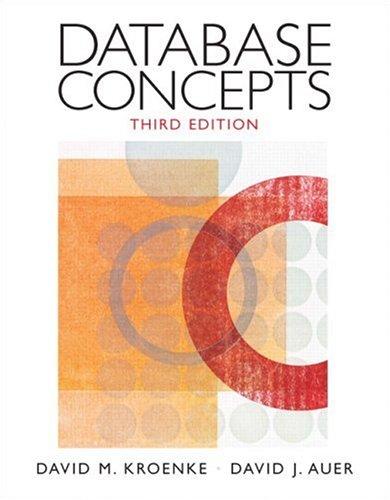Please do this in c++. DO NOT DO THIS IN JAVA OR OTHER LANGUAGES. Important: use recursion to implement DFS.



Write a C++ or Java class definition for an abstract data type called Graph that models an undirected graph. Some implementation details: Loops are allowed but multiple edges are not allowed .Vertices are labeled by number from 0 to where is the number of vertices in the graph. Implement the following public member functions. .A constructor that creates an empty graph. .An appropriate destructor. No need if you use Java .void load (char filename): Creates the graph using the file passed into the function. The format of the file is described later. You may assume load is only called once for a graph. You may modify the argument type of this function if you use Java. void display :Displays the graph's adjacency matrix to the screen. .void displayDFS (int vertex): Displays the result of a depth first search starting at the provided vertex. When you have a choice between selecting two vertices, pick the vertex with the lower number .void displayBFS (int vertex): Displays the result of a breadth first search starting at the provided vertex. When you have a choice between selecting two vertices, pick the vertex with the lower number You are permitted to add extra member functions you feel are helpfu DFS must be implemented using recursion. You can use "queue" in STL in the implementation of BFS. Other forms of using STL are not permitted. Input File Format The function load is responsible for reading n a file corresponding to a graph. The format is as follows: . The first ine contains a single integer indicating how many vertices are present in the graph. You may make no assumptions on how many vertices in the graph this means that your constructor will have to use dynamic allocation. .All remaining lines contain two integers that indicate an edge connects the two vertices. You can assume that the file exists and is well formed. As an example, the following graph is represented by the file 0 1 1 2 2 4 3 2 4 0 Test Driver Program The program must accept the name of an input file as a command line argument. Create a main function that does the following: 1. Create an empty graph. 2. Loads the graph using the specified input file 3. Display the adjacency matrix 4. Display a depth first search starting at vertex 0 5. Display a breadth first search starting at vertex O Files Some files are available on Canvas grapho.txt graphl.txt graph2.txt * graph3.txt The outputs for these files are in the program output section Here is the output for the four provided input files: grapho.txt: Adjaceney Matrix 0011D00 0 01110 1100 010 1100 011 01 0 0 011 0 011100 0001100 DFS at vertex 0: 021 3546 BFS at vertex : 023156 graphi.txt: Adjacency Matrix 01001 1011 0 01011 0110 1010 DES at vertex 0:01 2 3 4 Brs at vertex 0: 01423 graph2.txt: Adjacency Matrix 1 01110000 010001000 110010100 010101010 O 0 1 00 01 0 O O 011 101 0 0D001010 Drs at vertex 0: 0 1 2 5 4 3 6 @ BFS at vect ex 0: 013 24657 graph3.txt Adjaceney Matrix 101011 11010 0 101 011 11010 01 0110 DES at vertex 0:01 234 5 BFS at vertex 0: 01 2345









